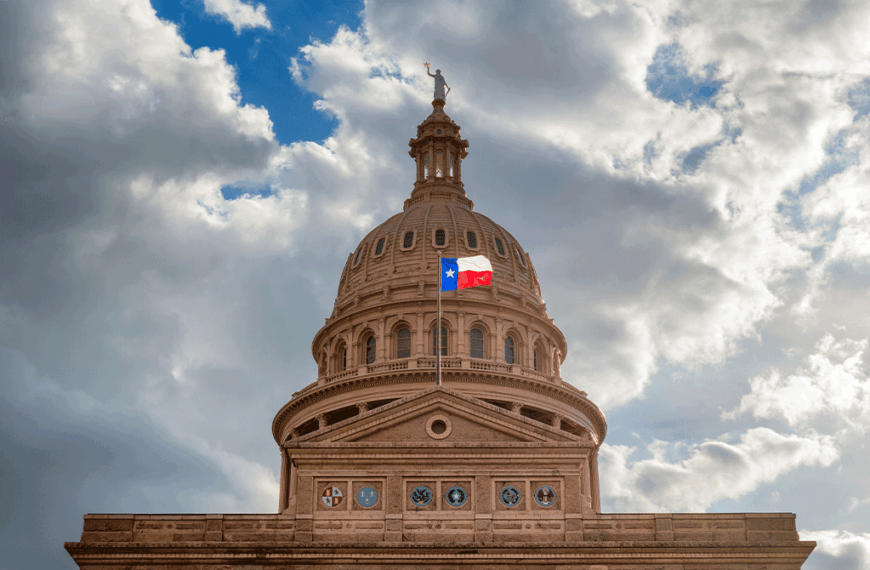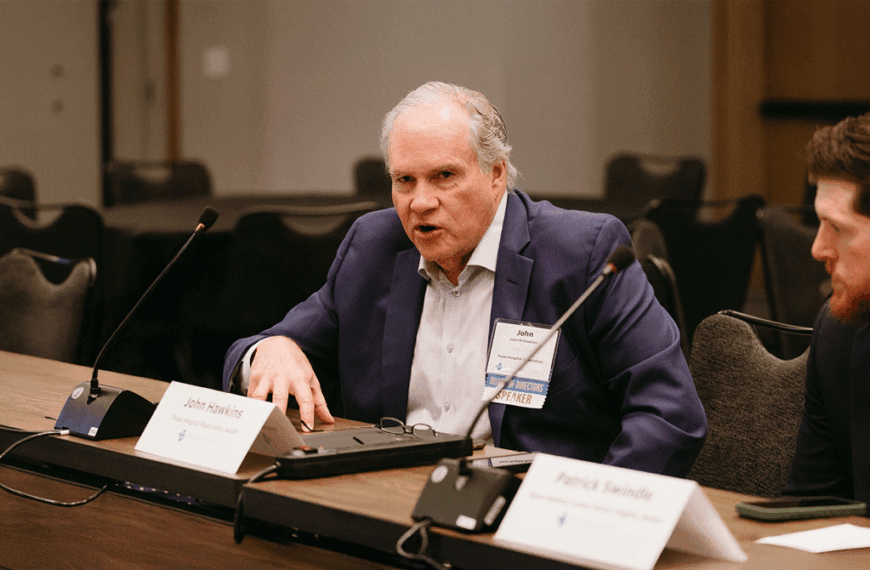At the start of this month, the federal government shut down for the first time in nearly seven years. This column is written in advance, and it’s possible that by the time you’re reading this, Democrats and Republicans will have ended their standoff and found at least a short-term funding solution to keep the government open. We at the Texas Hospital Association hope that occurs.

But what also needs to occur soon – and is long overdue – is the end of years of uncertainty over health care that finally came to roost with this month’s shutdown.
Tied to the Sept. 30 lapsing of government funding were expirations of several key programs and provisions tied to hospitals and health care. For years, Congress has been addressing these issues by playing that timeless political game of “kick the can” – opting for short-term Band-Aids while avoiding longer-term solutions that would allow health care facilities to prepare for a more stable financial future.
When the government ceased to be funded at midnight ET on Oct. 1, several immediate – and unsustainable – situations for Texas hospitals commenced. Among them:
- Three fiscal years’ worth of Medicaid Disproportionate Share Hospital (DSH) cuts officially kicked in. Hospitals in Texas and across the nation are already seeing the effects – but if these cuts aren’t stopped, it will mean $800 million in payment reductions to Texas safety-net hospitals in fiscal year 2026 and more than $2 billion over the life of the cuts.
- Two programs that offer essential payments for financially challenged rural hospitals – the Medicare-dependent Hospital and the enhanced Low-volume Adjustment programs – have both expired. For rural facilities with older patient populations and depressed patient volume, these programs are necessary for their survival.
- A 2% Medicare sequestration payment cut for hospital inpatient and outpatient services is now in effect – plus an as-yet unknown additional cut of perhaps up to 4% to offset spending increases from the One Big Beautiful Bill Act passed earlier this year. There’s some confusion on how large this cut will be, but it will be addressed in an end-of-year sequestration order by the federal Office of Management and Budget.
- The federal hospital-at-home program and loosened restrictions on telehealth in Medicare – both enduringly successful adaptations to COVID-19 more than five years ago – expired effective Oct. 1 as well. Hospitals have consistently urged Congress to make these pandemic-era policies permanent.
These situations are all tremendously detrimental for Texas hospitals and their patients, and all of them should be addressed whenever lawmakers finally reach a government funding deal. But beyond that, it’s time to finally give our hospitals long-term relief on all of these issues – not the short-term fixes that have been Washington’s M.O.
For just one example – the most outsized one – the Medicaid DSH reductions have been postponed again and again, for years on end, as part of short-term funding packages. With Texas still among the dwindled number of states that haven’t expanded Medicaid, our safety-net hospitals rely on DSH funding to offset care they provide to low-income and uninsured patients.
The work of THA and other hospital advocates has helped convince Congress to enact these short-term reprieves. But throughout that time, we’ve repeatedly stressed our preference for a more permanent solution – namely, a full repeal. And we know at least some level of repeal is possible, because we’ve already achieved it. Early in calendar year 2024 – thanks to the leadership of Houston-area Rep. Dan Crenshaw and others from the Texas congressional delegation – Congress passed a repeal of the DSH cuts for that fiscal year. We certainly know lawmakers have many considerations to balance when ironing out a funding framework. But repealing the remaining DSH cuts in their entirety will go a long way toward allowing safety net hospitals in the program – both in Texas and elsewhere – to find steady long-term footing on providing this care.
For all these health care programs and policies thrown into limbo following the government shutdown, long-term stability should be the center of the discussion. We’re urging Congress to allow our facilities to establish a foundation for their futures that won’t be month to month or year to year. That’s been the way we’ve operated for too long, and it’s time to take all these issues off both hospitals’ plate and lawmakers’ plate – for good.
Related articles from The Scope
Health Care Should be Exempted From Dramatic H-1B Visa Fee Hike
“Access to care” is a broad term heard a lot…
Unseen Savings: Charity Care, Community Benefit and the Safety Net
Continued investment in charity care and community benefit programs remains…
In This Special Session, We Stressed Why Hospitals Themselves Are Special
During the special session of the Texas Legislature that just…
Download THA’s 2025 New Health Care Laws Guidebook
After each regular session of the Texas Legislature, hospitals and…
Texas Needs Congress to Renew Soon-to-Expire Premium Credits
A fair number of times in this column’s history, you’ve…
“Surreal”: Responding to a Disaster
Kerrville hospital plays a key role in July flood response;…







